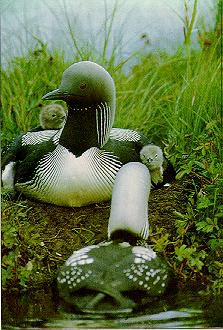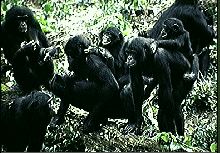From Last Class
Ethology
- Animal behaviours in natural environment
Species-specific behaviours
Homologies
Analogies
Non-verbal expressions
- Ritualization, antithesis, autonomic responses
Emotional expression
Sociobiology
Social systems in animals
Behaviours interacting with other behaviours
- Mating, agression, cooperation
Compare and contrast species
Dr. E.O. Wilson

Mating Patterns
Polygyny
- One male, multiple females
Polyandry
- One female, multiple males
Monogamy
Polygynandry
- Multiple males and females in social group
Who gets to mate?
Parental investment?
Polygyny
Fairly common in mammals
Females have high parental investment
- Gestation
- Lactation
- Rearing
Males have low parental investment
Not all males get to mate
 �
�
Polyandry
Very uncommon in mammals
Often in non-mammalian species
Females have low parental investment
Males have high parental investment
- Often, one chance to mate
- Sometimes carry/tend the eggs

Monogamy
Equal parental investment
- Takes both parents to raise offspring
Little sexual dimorphism
Seen in:
- 90% birds
- 3% mammals
- Feeding
Cheaters
- Males: low additiona investment
- Females: increased genetic diversity of offspring
 �
�
Polygynadry
Rare
Bonobo chimpanzees and common chimpanzees
Advantages?
- Males do not know which offspring are theirs
- Protect all offspring
- Protect all females
- Males do not fight over females
- Sex used to reduce social tensions
Consortship
 �
�
Incest
Mating with a close relative
Evolutionary disadvantage
Incest avoidance techniques
- Kinship recognition
- Migration
Chimpanzees
- Show both avoidance techniques
- Females tend to move to a new colony
- Strange female effect
Aggression
Fighting and threats of fighting
Fighting to mate
- Polygyny
- Males compete for females

Territoriality
- Feeding ranges
- Territorial signaling

Dominance within a colony
- Submissive signals
- Dominance hierarchies
Helping
Cooperation
- Individual helps another while helping itself
- Selfish
- Obtains resources that can not be gotten alone
- Increases chance of survival
Altruism
- Kin selection theory
- Help close relatives
- Increases similar genes in population
- e.g., social insects, wolf "aunts"
- Reciprocity theory
- Long-term cooperation
- Memory

Sociobiology and Humans
Consider:
- Handsome stranger comes to town
- Fences around backyards
- Cheating in a relationship
- Lending class notes
Can sociobiology be applied to humans?
Deterministic Fallacy
- Genes play a role in determining behaviour: TRUE
- Genes determine behaviour regardless of environment: FALSE
Naturalistic Fallacy
- Natural selection and morality
Analogies
- A good way to generate a hypothesis
- The hypothesis must be tested through detailed study!
�
Some Hypotheses About Humans
Communal living
Nepotism
Monogamy and Polygyny
Men are more violent than women
Avoidance of incest
�
Chapter 4 In Short Form
Evolution is about adaptation
Levels of adaptation
Ultimate and proximal causes of behaviour
Genetic drift
Ethology
Species specific behaviour
Homologies and analogies
Non-verbal expressions
Emotional expressions
Sociobiology
Mating patterns and parental investment
Aggression
Helping
Sociobiology and humans
For Your Consideration...
In species in which males fight over the right to mate with females, natural selection tends to make the males larger than the females. What limits the eventual size of the males? In other words, what selection pressures balance selection for increased size? Hint: think about energy requirements.
Wolves have evolved a complex communication system in their howls. What use might this serve?
What social behaviours can help prevent the spread of dangerous recessive genes in a population?
If an animal is only considered to be "successfully" if it passes its genes on to the next generation, how did altruism every evolve?
Return to Psych 104 Lecture Index page.








